Ask the Filmmakers: “Free in Deed” Star David Harewood and Writer-Director Jake Mahaffy
Free in Deed (2015) tells the story of a preacher in a Memphis storefront church who attempts a faith healing on a boy with a mysterious illness. Based on actual events, Free in Deed stars David Harewood (Homeland) as the lonely Pentecostal minister and Edwina Findley (The Wire) as the struggling single mother who brings her son to the church.
At SXSW 2016, ScreenPrism spoke with star and writer-director Jake Mahaffy about filming in Memphis, Harewood’s turn as a conflicted preacher with a dark past and the role of the church in low-income communities that have been failed by other institutions.
ScreenPrism: You’ve created a distinctive, touching environment in dramatizing this Memphis community. How did you go about realizing this world onscreen?
Jake Mahaffy: A lot of it is just being in Memphis and finding the right churches. People just brought it. I don’t know how to answer that question. It’s performances, it’s being in Memphis, and being in a real environment.
David Harewood: Obviously, Jake was inspired by the true story. He sent me this look book of what he felt the film would feel like, and it was extraordinary because I’d walked past several of those kind of storefront churches in Brooklyn, where I was staying at the time. You always kind of want to pop your head in, but you feel as though you can’t. You feel as though it’s not really for you or you wouldn’t be welcome, so to go down to Memphis and find myself walking into that world and being welcomed into that world was extraordinary. Suddenly you are in a very, very different environment. People who have had very difficult lives but who have found an answer to their pain and suffering in religion. Extraordinarily difficult lives, and they weren’t ashamed to share them, really kind of brought this film to life for me, took me into an environment that I hadn’t ever seen before.
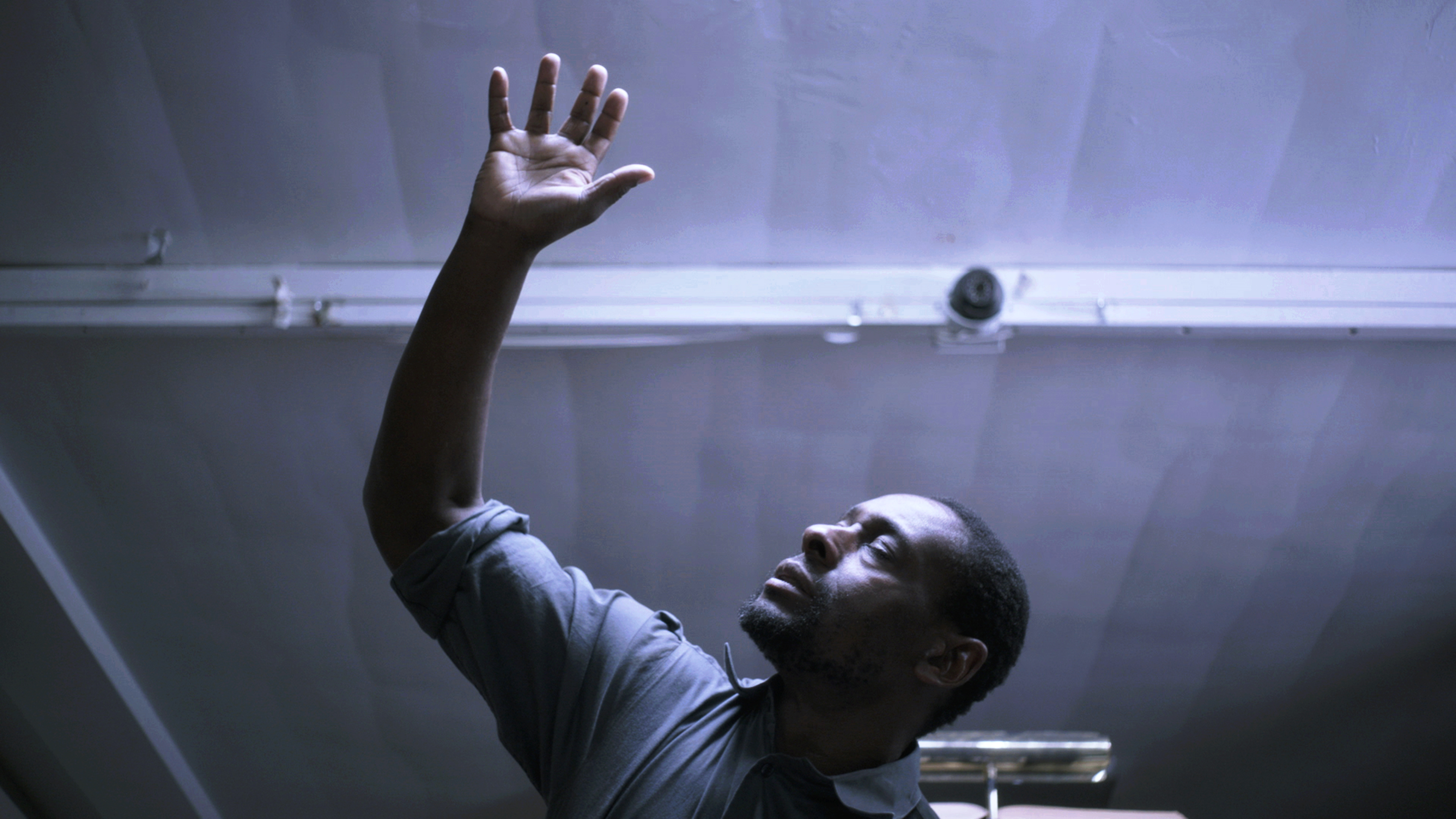
David Harewood in Free in Deed (2015)
SP: Can you talk about the true story that inspired the film and how you came across it?
JM: It was on world news, CNN. I happened to see it. It was ‘03.
SP: What did your research entail?
JM: I went to Milwaukee, met with people, met the actual church, did footage and tried to get as much backstory as I could, as far as what happened or may have happened, and then just wrote the screenplay.
DH: I was blown away by the screenplay. It was very, very different from anything I’ve read and anything I’ve seen. It was a lot longer, the screenplay, a lot more intense. There were scenes of [my character] running through the streets and kind of screaming. There was some incredible stuff, and I was like, Wow, this guy’s a really intense kind of character. A really interesting character battling his inner demons. I grew up in a pretty secular upbringing, so I wasn’t familiar with a lot of these references, and Jake sent me huge swathes of the Bible to read. I found myself up till three or four o’clock in the morning reading the Old Testament, fire and brimstone. It was a crash course in the Bible — fascinating and great for an actor to get their teeth into something like that. It was a real departure from my normal life. When you do read the Old Testament, having read a lot of Shakespeare and done a lot of Shakespeare, you kind of think, “Oh that’s where he got them from, and that’s where he got that phrase from.” When you read the Bible and then you read Shakespeare, you can actually see almost direct parallels. I had no idea so many of today’s modern sayings came from the Old Testament. It was a real revelation, a real experience for me to throw myself into this very different role.
SP: In addition to using the Bible as a way into his mind, were there any real-life people or preachers that you studied to develop the character?
DH: Not really, no. I did study the real [inspiration], Ray Hemphill. We had to lose him in the end. Initially, I was [modeling my character on him], but we had to throw that out and start again. It was a good exercise in studying for me, but in the end it wasn’t very useful to the film, so we had to basically go into a different direction.
SP: How would you describe the character?
DH: Somebody who’s in a lot of pain, somebody who’s struggling with himself, struggling with his faith, with belief. Everybody seems to believe that he is endowed with this power, but there is something inside of him which doubts that, is struggling with that. He is obviously very attracted to the character of Melva [Findley], but he doesn’t quite know how to handle that, doesn’t how to handle his own natural feelings. He’s just a fascinating character, a fascinating guy. He’s obviously trying to do good in the world, but you get the sense that he’s done something in his past which is pretty bad, and I think he’s trying to make up for that by throwing himself into this position and almost trying to deny everything else, putting fires out, trying to deny all those other feelings that keep resurfacing. That’s what makes for a great character, which is great conflict.
SP: The film shows us a world that’s dealing with great poverty, and we see that the medical community offers no help to this sick child. In making this story, what did you feel about the church’s role in the lives of people who have been failed by other institutions?
JM: Just the way it’s depicted. It’s obviously supportive in a lot of ways.
DH: [The church] becomes their only form of kind of release. Those churches were packed every Sunday. It was in a pretty run-down area; the surrounding areas were pretty bleak. It’s almost as if they need that Sunday morning to release the tension. They cling to it, as if it’s a crutch. Most of them are former crack addicts, and somehow they’d found religion and that had turned them away from their drug habits. So it was almost like an AA meeting. It was like, we need this in order to stay clean; we need this rush in order to stay on the straight and narrow. It’s great that the Sunday service, religion, gives them that. I suppose without that, they probably wouldn’t have anything. There’s certainly no support coming from government or coming from any other institution. As you say, the medical institution doesn’t give them any. Melva finds herself [at the church] because she’s got literally nowhere else to go. No one else is giving her any help. It’s an amazing thing.
[SPOILER] At the end of the film, she’s the one who almost seems to be at peace because the disruption in her life is gone. I don’t want to call her child a problem, but the main source of her trouble has been taken away. I think that’s really, really interesting, the guy who is full of faith is the one who ends up carrying the burden. She’s the one who, her prayers are answered in a strange way.
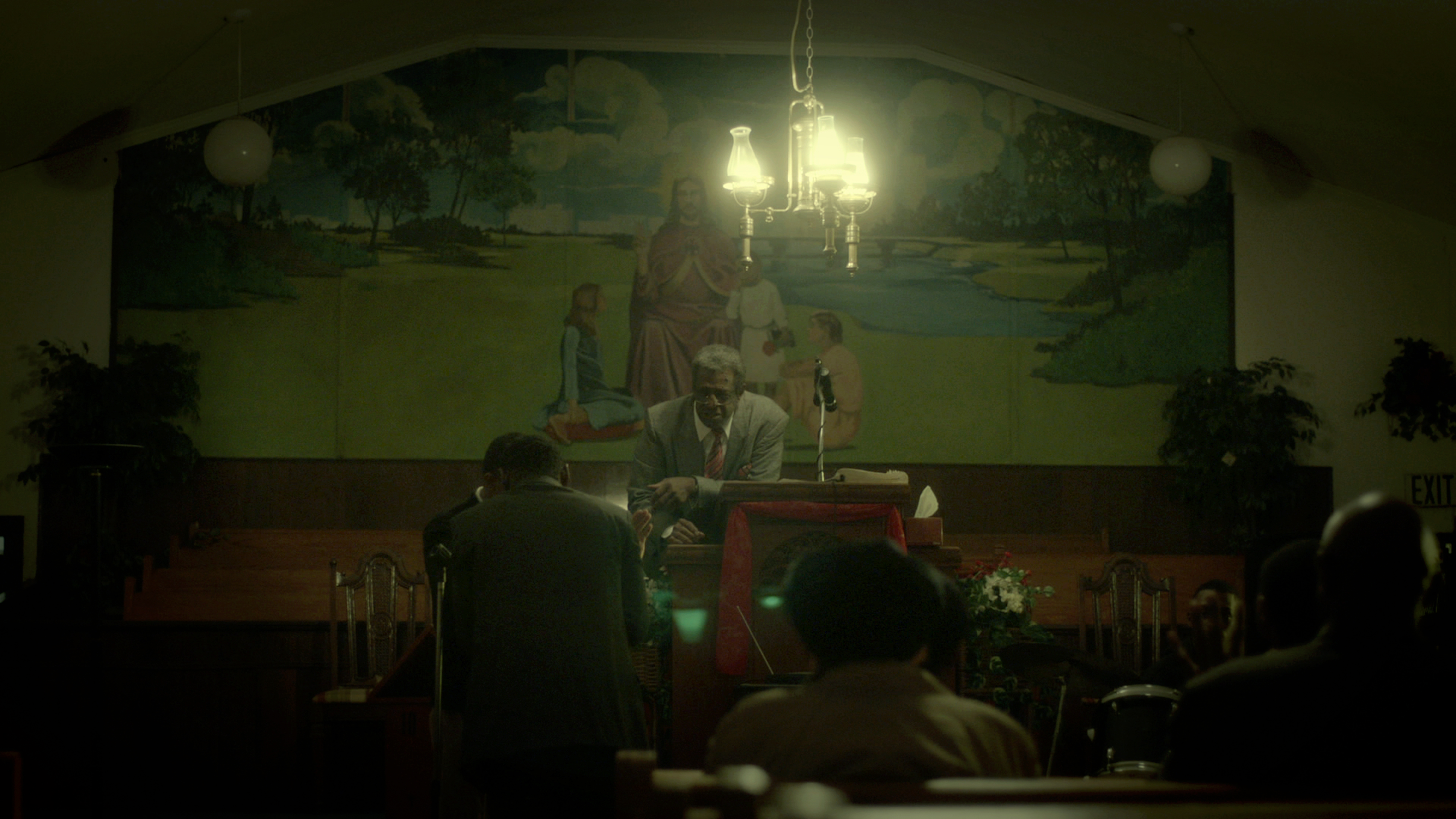
Free in Deed (2015)
SP: The sound design of the film is effective at bringing us into different atmospheres and creating strong emotional shifts between them. What were your ideas for conceiving the sound?
JM: One was subjectivity — to try and recreate aurally each character’s inner world. Obviously we were photographing, literally, an objective sort of reality, so the audio is what can bring you into the character’s head a bit more. And then you create juxtapositions to really put different states, subjective states or different themes together and bang them together to get that friction. That’s the idea of finding hard outs or ins on every scene and not doing a lot of bridging or establishing.
SP: For the production design, you used real church spaces?
JM: Yeah. We ended up putting in pews. They usually use folding chairs and folding tables, so we took those out and brought in some pews. [Other than that] we pretty much left the space the same.
SP: Did the story change much for you over time?
JM: The first draft I made when I first heard the story was about white people, in sort of a rural place, and then once I actually got in contact with the guy on who it was originally based I realized that’s not going to work. It’s an African-American story, and white-ify-ing it, changing it around to something else, it felt too many levels removed from my interest in it. I realized with real research I could make something much better.
SP: How long did you spend in research stage?
JM: All the time from ’04 until the time we shot it. Even on the last day and every day, even on the shoot, we were trying to find out more. We shot it in 2014. It took me sixteen months to edit it. So from 2004 to 2014, that’s about ten years.
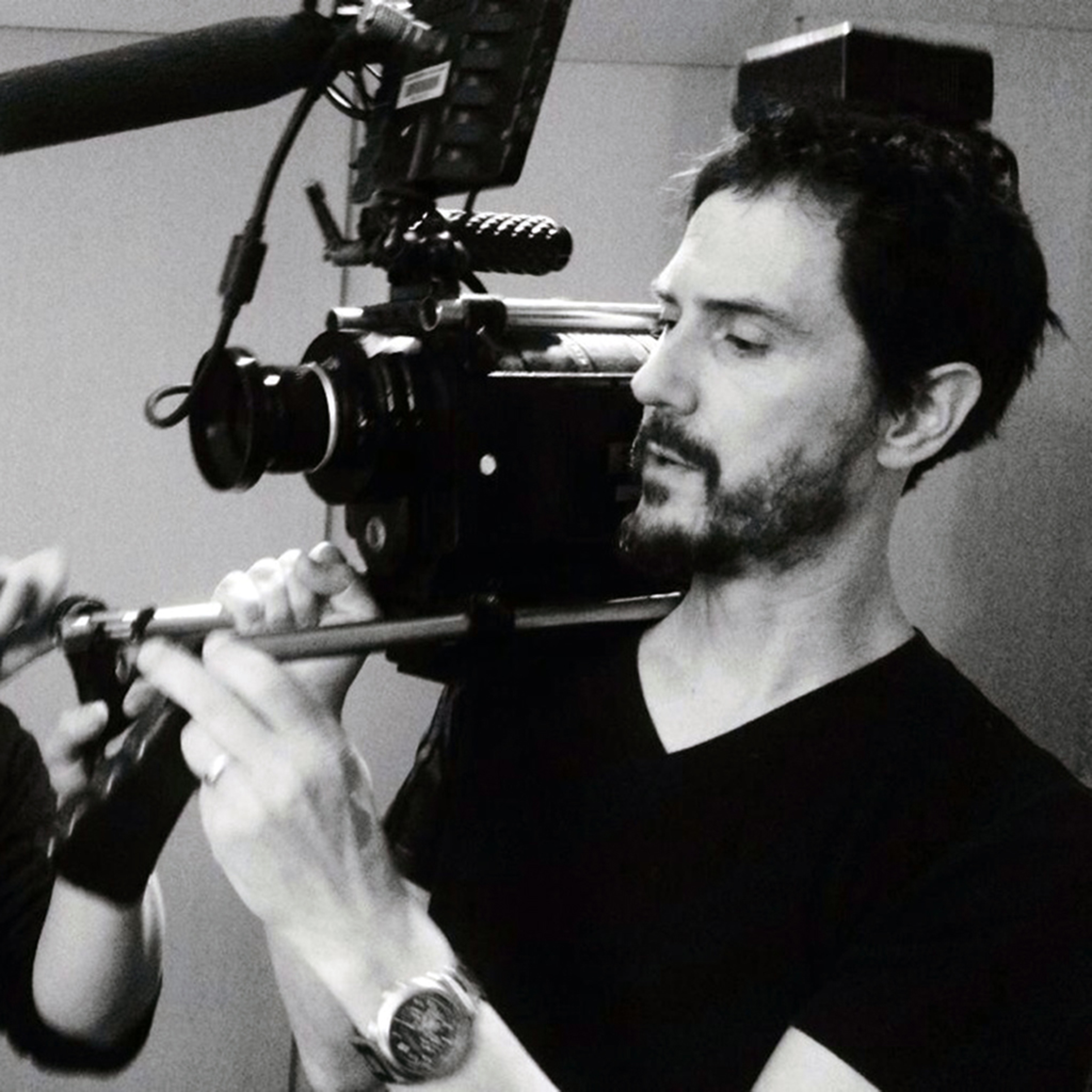
Jake Mahaffy
SP: How did you build all that energy in the church scenes?
DH: No need for us to build anything. They literally went for it. Prophetess Libra, on the very first morning, Jake called “Action,” and she said, “Look, they think they are making a movie, but we’re here to go to church.” And she told everybody, for the next week, we’re at church. And they were fully behind it. So whenever we needed praise or singing, they went for it 100%. Even when we stopped filming they’d go. It was extraordinary. Sometimes they would shout “Cut,” and people [would be] running around the church, shaking on the floor and crying and screaming. It was palpable. Sometimes you’d have to kind of say to yourself, maybe I’m missing out on something here because these guys are really into it. I made me think that there is definitely something there because it was collective and literally palpable. Sometimes you would go home thinking, I witnessed something today; I witnessed a mass event. Very moving. Sometimes very, very moving.
SP: Besides the two leads, were all the people in the church scenes non-actors from the community?
JM: Mostly. Some of the others were actors, like the boy and the girl, but yeah, those are people from actual churches that said they wanted to be involved.
SP: So those scenes have a documentary aspect, showing what would happen on a given Sunday?
JM: Yeah.
DH: When he told me about the film, I figured we both needed to go walk to into some of these churches and sit and observe. It was fascinating—people talking in tongues. Just an amazing world to walk into. And I’m glad I did it because it opened up a window on that world for me.
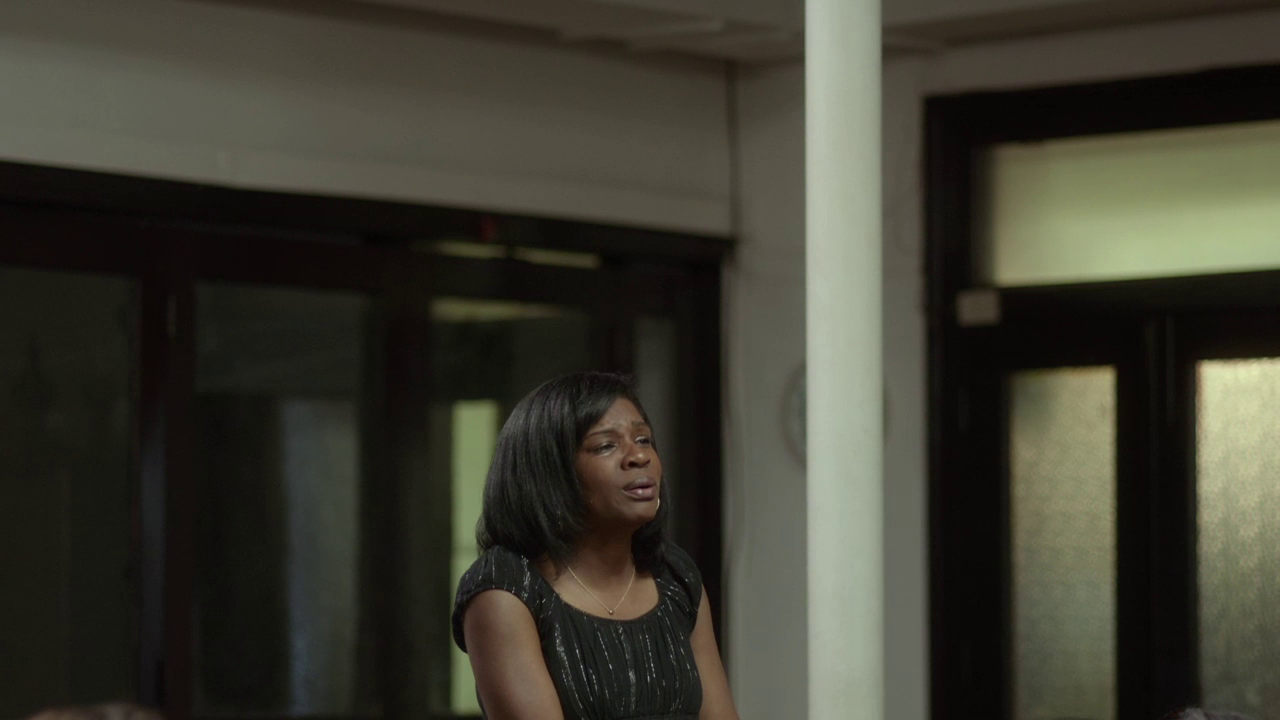
Free in Deed (2015)
SP: Has it made you question your secular upbringing?
DH: At times. I think I’m too far gone, too much of a sinner to change right now! But certainly you do question it, and I’d say there’s a fair amount of envy. My grandmother is deeply religious and has an enormous strength and faith, and sometimes you do envy that. You envy that she has a certainty. I am full of doubts and full of questions, and she has none of that because she reads the Bible, and she knows that it’s all in God’s hands, and at the end of the day everything’s going to be hunky-dory. I haven’t got that certainty, so I certainly envy it.
SP: And for you, Jake?
JM: No, not at all.
SP: But you’re interested in exploring religion through the film?
JM: I’m satiated, completely. By the time we shot the film, my original interest in the philosophical, religious questions that I started the project with had pretty much worn themselves out. At that point I was more interested in the human relationships in the film, the psychology.
SP: Was the religious aspect of the story one of the first things that drew you?
JM: The first thing was that here’s a person trying to do something good and failing terribly. That dramatic irony is originally what interested me. And because religion and the practice of it in this case is so different from most of the modern world, I think it’s very visual and interesting to see that practice n a modern environment.
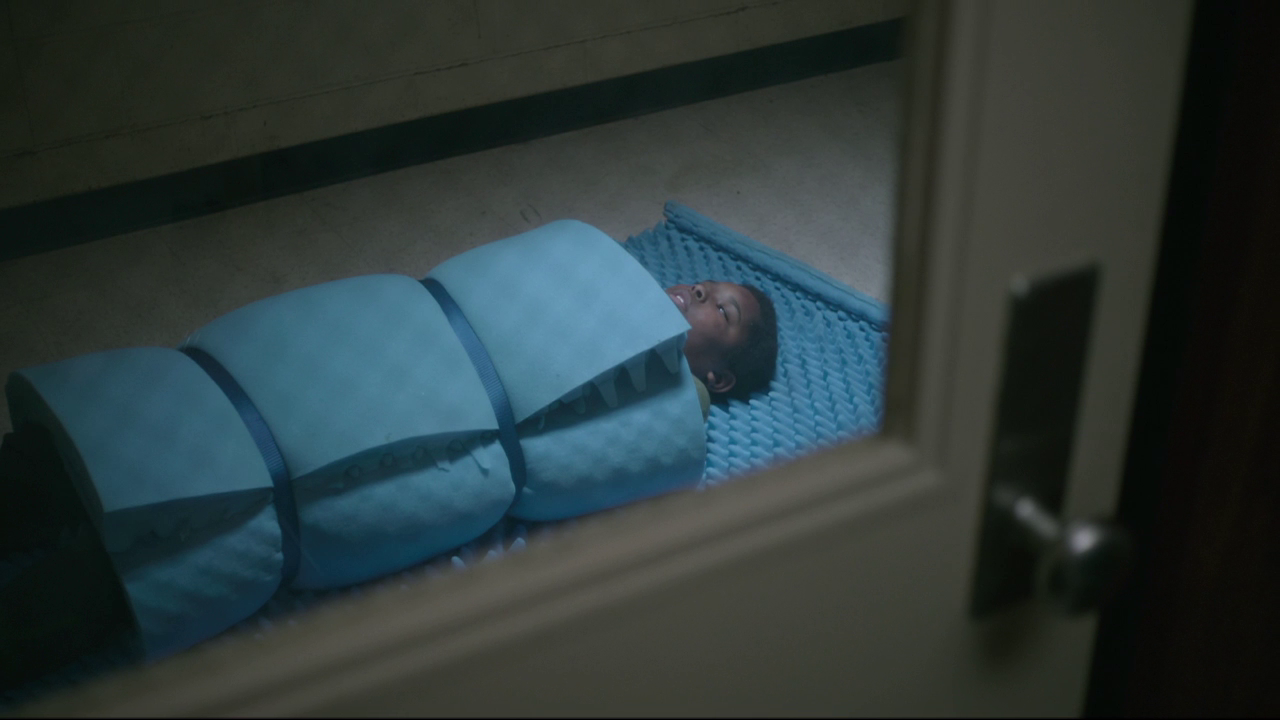
Free in Deed (2015)
SP: What do you think is the emotional impact of witnessing that dramatic irony?
JM: Hopefully it’s different for different people. Some people feel frustrated. Some people feel moved in some way. It’s different for everybody. Some people would be judge-y. Some people would have empathy to see someone go through that. Some people, it’s just awkward and embarrassing.
DH: Certain people are very moved by it. A lady last night [at the SXSW premiere] was sobbing all the way through the film. She’s a pretty tough woman, but she found herself moved by the helplessness of everybody in the film. Everybody seems to be struggling, trying to do good. Certainly, the medical profession—it’s not that it’s depicted as dismissive, but they don’t provide any answers to Melva. There’s no real intention or effort on behalf of the medical professionals. On the way back from [meeting with the doctor] is when she meets the people on the bus, and they say come to church, we’ll help you. She’s got nowhere else to go. And they do provide her with some sort of assistance and support, which she’s not got from anywhere else.

